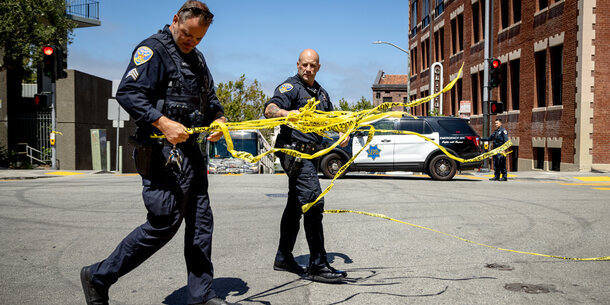When crime rose during the COVID-19 pandemic, some pundits and politicians jumped to a convenient scapegoat: criminal justice reform. They were wrong then, and they’re wrong now. No evidence exists to support a link between crime and reforms that seek to make our system fairer and more effective. Yet the narrative persists, growing with intensity as every election day approaches.
Fortunately for the country, not everyone has fallen for the rhetoric. Lawmakers in states around the country are pushing forward with sensible, often bipartisan reforms that make criminal justice less unnecessarily punitive and better at keeping the public safe.
Last week, for example, New York Gov. Kathy Hochul signed a bill that will make it easier for people leaving prison for all but the most serious felonies to enjoy a true “second chance,” to the direct benefit of their families and communities. Once the Clean Slate Act takes effect, after someone has been out of prison and offense-free for several years their criminal record will be automatically sealed, rather than lingering as an obstacle to housing and employment. (The law allows some employers, such as schools, to access records, and permits them to be unsealed if other special circumstances arise.)
The governor’s signature makes New York the 12th state in the nation to enact such a law, a reform that will help break the cycle of poverty, crime and incarceration. That’s the goal of crucial, common-sense criminal justice reforms being enacted around the country. In Florida, for example, Gov. Ron DeSantis a signed a law in July that allows those on probation to reduce their time on supervision by earning a GED, a college degree or a vocational certificate, or by holding down a job.
And in September Illinois put an end to cash bail, becoming the first state to completely remove wealth as a determining factor in whether someone goes home or to jail while awaiting trial. Studies show that eliminating cash bail doesn’t have a negative impact on public safety. Under the new Illinois law, judges can still jail someone who poses a public safety threat or release someone under specific conditions, such as avoiding certain places or people. Despite a lengthy campaign to blame bail reform for rising crime, common sense and the Illinois legislature prevailed.
On the opposite side of the country, New Mexico has worked to eliminate the burden of criminal justice debt. Courts charge fees for things like court filing, and the costs have increased over time, even replacing general tax revenue as a source of funding for courts. These fees are also regularly charged to people who cannot afford them, creating crushing debt for those involved in the justice system. There was never a public safety justification for these burdensome fees. In April, New Mexico eliminated all fees charged to people after conviction, such as a “court facilities fee,” in addition to eliminating fees for missing a court date or payment. And in March, Gov. Michelle Lujan Grisham signed a law ending driver’s license suspensions for missed court hearings and overdue fees and fines, both of which never had a public safety rationale. Both bills enjoyed bipartisan support.
Other states are working to improve their correctional systems. Connecticut now limits the number of days someone can spend in solitary confinement, a change that will lessen the punishment’s damage to mental health and reduce crime in the long run. Research indicates that time spent in solitary can increase one’s likelihood of committing an offense after release, especially violent re-offending.
Each of these reforms succeeded despite a political backdrop of blaming criminal justice reform for rising crime. Violent crime did indeed rise sharply at the start of the pandemic, with the national murder rate jumping around 30 percent from 2019 to 2020. But there was never strong evidence to connect these increases to specific policy changes. Since then, crime has fallen nationally — and is dropping even more sharply in many major cities.
Voters and policymakers across the country are showing their trust in criminal justice reforms that make the system fairer and our communities safer. Leaders everywhere should take note: Focusing on fairness and humanity in criminal justice goes hand in hand with public safety.




